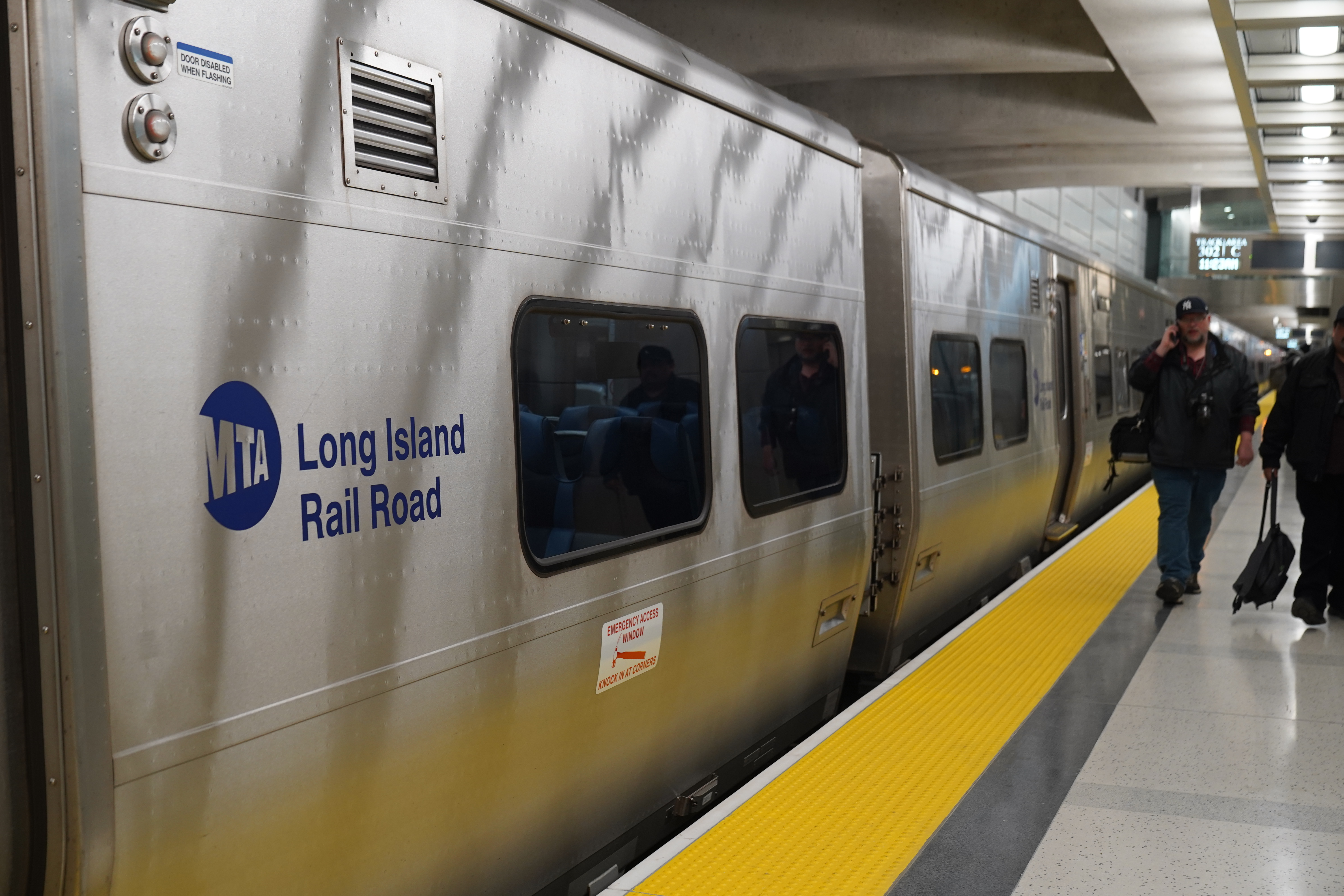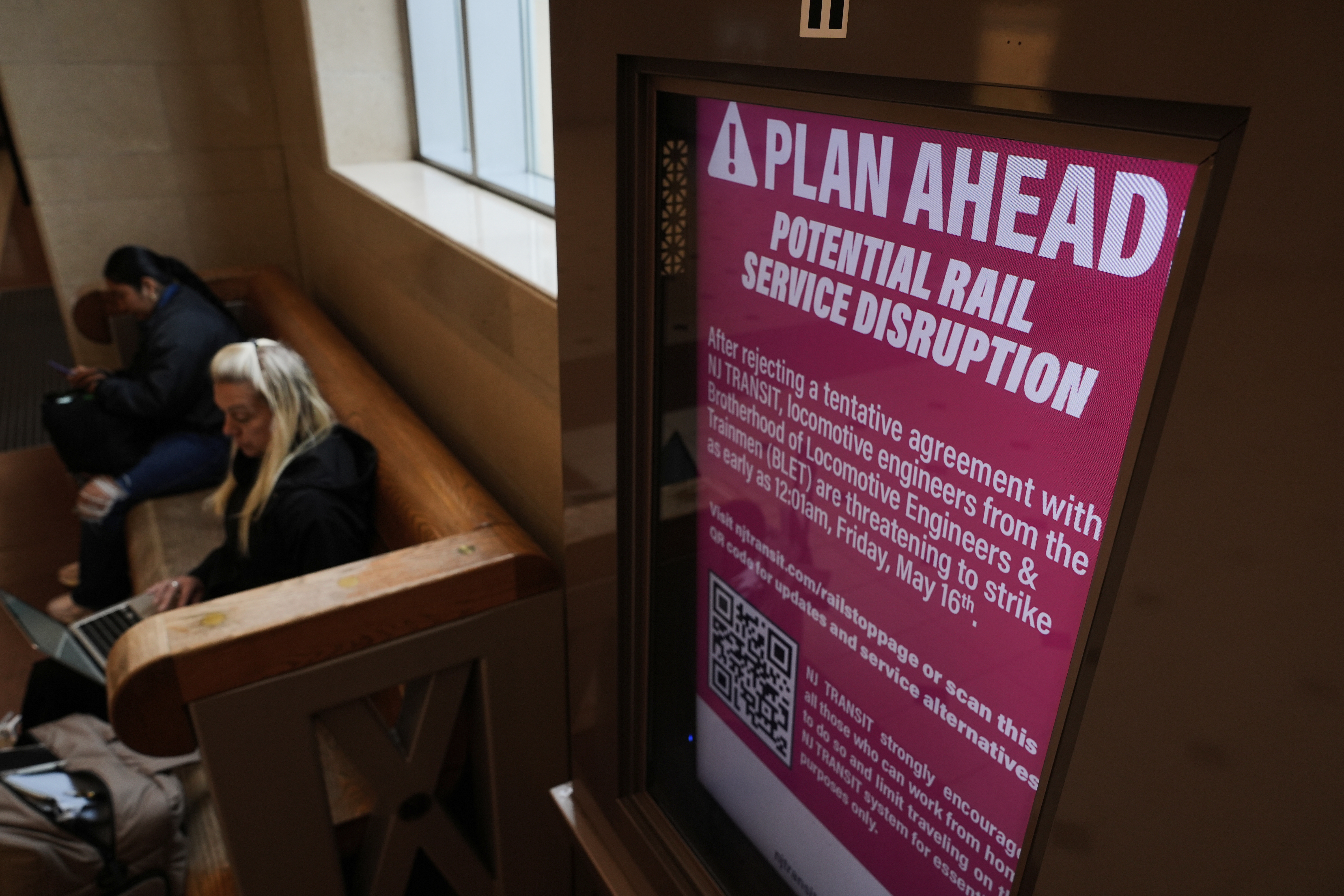LIRR Train Fire: West Hempstead Branch Service Suspended!
LIRR West Hempstead Branch Paralyzed: Work Train Fire Causes Commuter Chaos
Introduction: A Commuter's Nightmare Unfolds
Imagine starting your Friday with the usual rush to the train, only to be greeted by a sea of confused faces and a flurry of hurried announcements. That's exactly what happened to many Long Island Rail Road (LIRR) commuters on the West Hempstead branch. A fire on a work train, early in the morning, brought the entire line to a screeching halt. Service was suspended for hours between West Hempstead and Valley Stream, leaving many scrambling for alternate routes. So, what exactly happened, and how did it impact the morning commute? Let’s dive in.
The Incident: A Work Train Goes Up in Flames
The drama unfolded before dawn in Malverne, when a work train inexplicably burst into flames. The fire reportedly erupted near the Westwood station, sending plumes of smoke and flames soaring into the morning sky. A work train catching fire? It's not exactly your everyday occurrence. Think of it like your car suddenly deciding to become a barbeque on the highway – unexpected and definitely inconvenient!
Location, Location, Location
The proximity to the Westwood station is significant. Any fire near a station poses an immediate safety risk and requires swift action. This location likely contributed to the urgency of the emergency response.
The Time of Day Matters
Thankfully, the incident occurred before the peak of the morning rush hour. However, it still caused considerable disruption for those who start their day early. Imagine being one of the first commuters to arrive, only to find your train line resembling a scene from an action movie. Not the ideal start to a Friday!
The Emergency Response: Firefighters Battle the Blaze
When something like this happens, the professionals jump into action. About 50 firefighters descended on the scene to combat the inferno. Malverne Deputy Fire Chief Ernest Bohringer reported that the flames reached an astonishing 40 feet in the air. That's taller than a three-story building! It took the firefighters about 90 minutes to extinguish the blaze. That's a long time to battle a fire, especially considering the potential for further damage.
Cooperation is Key
The response likely involved coordination between multiple fire departments and the LIRR. In emergencies like this, seamless communication and teamwork are essential to prevent further escalation.
The Risk Factor
Fighting a train fire presents unique challenges. Electrical hazards, potential fuel leaks, and the confined space can all pose significant risks to firefighters.
The Aftermath: Suspended Service and Commuter Chaos
The immediate consequence of the fire was the suspension of service on the West Hempstead branch between West Hempstead and Valley Stream. This created a ripple effect of delays and disruptions throughout the LIRR system.
Alternate Routes and Options
LIRR officials scrambled to advise passengers on alternate routes. The Babylon branch trains were adding a stop at St. Albans to accommodate displaced commuters. The NICE bus was also honoring LIRR fares on several lines (N1, N4, N6, N31 and N32). Talk about a logistical nightmare!
The Impact on Commuters
For commuters relying on the West Hempstead branch, the fire meant a delayed start to their day, increased travel time, and the stress of navigating unfamiliar routes. This is more than just an inconvenience; it affects people's jobs, appointments, and overall well-being.
Damage Assessment: Tracks and Trains Take a Hit
The fire caused significant damage to the work train itself, and likely to the tracks as well. Workers spent much of the day removing the burnt train and debris and replacing the damaged tracks. Replacing tracks is no small feat; it requires specialized equipment, skilled labor, and careful coordination.
The Cost of Disruption
Beyond the physical damage, there's also the cost of the disruption itself. Lost productivity, overtime for LIRR employees, and the potential for decreased ridership all add up. A single incident like this can have a surprisingly large economic impact.
The Environmental Concerns
Train fires can also release pollutants into the air and soil. While the immediate focus is on extinguishing the fire and restoring service, environmental remediation is also a crucial consideration.
The Investigation: Unraveling the Mystery of the Fire
An investigation into the cause of the fire is currently underway. Determining the root cause is crucial to prevent similar incidents in the future. Was it a mechanical malfunction, an electrical fault, or something else entirely? Only time will tell.
Potential Causes
Several factors could have contributed to the fire, including faulty wiring, a fuel leak, or even arson (though that's less likely). Investigators will meticulously examine the train and the surrounding area to gather evidence.
Preventative Measures
The investigation will also likely examine existing safety protocols and procedures. Are there any gaps in the system that need to be addressed? What steps can be taken to minimize the risk of future fires?
The Return to Service: A Sigh of Relief for Commuters
Finally, after hours of disruption, service was restored along the West Hempstead branch. This undoubtedly came as a huge relief to weary commuters who had endured a challenging day. The return to normalcy, however gradual, is always a welcome sight after such an event.
The Aftermath of Reopening
Even after service is restored, there can still be residual delays and overcrowding as the LIRR works to get back on schedule. It's not like flipping a switch; the system needs time to recalibrate.
Lessons Learned
Every incident like this provides an opportunity for learning and improvement. The LIRR can use the findings of the investigation to enhance its safety procedures, improve emergency response times, and better communicate with passengers during disruptions.
Commuter Resilience: Adapting to Unexpected Challenges
This incident highlights the resilience of commuters. Faced with unexpected disruptions, they find alternate routes, share information, and support each other. It’s a testament to the human spirit’s ability to adapt and overcome adversity. Think of it as a real-life "Amazing Race," but with less glamour and more frustration!
The Importance of Infrastructure Investment: Keeping Our Rails Safe
This incident also underscores the importance of investing in infrastructure maintenance and safety. Regular inspections, timely repairs, and upgrades to aging equipment are essential to prevent accidents and ensure the reliability of our transportation systems. A well-maintained railway is like a well-oiled machine – it runs smoothly and efficiently.
Communication is Key: Keeping Commuters Informed
Clear and timely communication is crucial during disruptions. The LIRR needs to provide accurate information about delays, alternate routes, and estimated restoration times. Using social media, mobile apps, and on-site announcements can help keep commuters informed and reduce anxiety. Imagine being stranded without any information – that’s a recipe for frustration!
The Role of Emergency Preparedness: Planning for the Unexpected
This incident serves as a reminder of the importance of emergency preparedness. The LIRR, fire departments, and other agencies need to have well-defined plans and protocols in place to respond effectively to unexpected events. Just like having a fire extinguisher in your home, being prepared can make all the difference in a crisis.
The Bigger Picture: The Challenges of Mass Transit
This incident is just one example of the challenges facing mass transit systems around the world. Aging infrastructure, increasing ridership, and the constant need for upgrades and improvements all put a strain on resources. Investing in mass transit is not just about convenience; it's about economic growth, environmental sustainability, and the quality of life for millions of people.
Conclusion: Lessons Learned from the LIRR Fire
The fire on the LIRR West Hempstead branch served as a stark reminder of the potential for disruptions in our daily lives. While the incident caused significant inconvenience, it also highlighted the resilience of commuters, the dedication of emergency responders, and the importance of infrastructure investment. Key takeaways include: the need for prompt and coordinated emergency response, the importance of transparent communication with the public, and the continuous need to maintain and improve railway infrastructure to prevent future incidents. Let's hope the investigation yields valuable insights that will help prevent similar events from happening again.
Frequently Asked Questions (FAQs)
Here are some frequently asked questions about the LIRR West Hempstead branch fire:
What caused the fire on the LIRR work train?
The cause of the fire is currently under investigation. Potential causes include mechanical malfunction, electrical fault, or other unforeseen issues.
How long was service suspended on the West Hempstead branch?
Service was suspended for several hours between West Hempstead and Valley Stream while crews extinguished the fire, removed the damaged train, and repaired the tracks.
What alternative transportation options were available to commuters?
The LIRR advised passengers to use alternate branches, such as the Babylon branch with a stop at St. Albans, or the NICE bus, which honored LIRR fares on select lines.
Were there any injuries reported as a result of the fire?
Fortunately, no injuries were reported in connection with the fire.
What steps are being taken to prevent similar incidents in the future?
An investigation is underway to determine the cause of the fire, and the LIRR will likely review its safety protocols and maintenance procedures to identify areas for improvement and prevent future occurrences.

